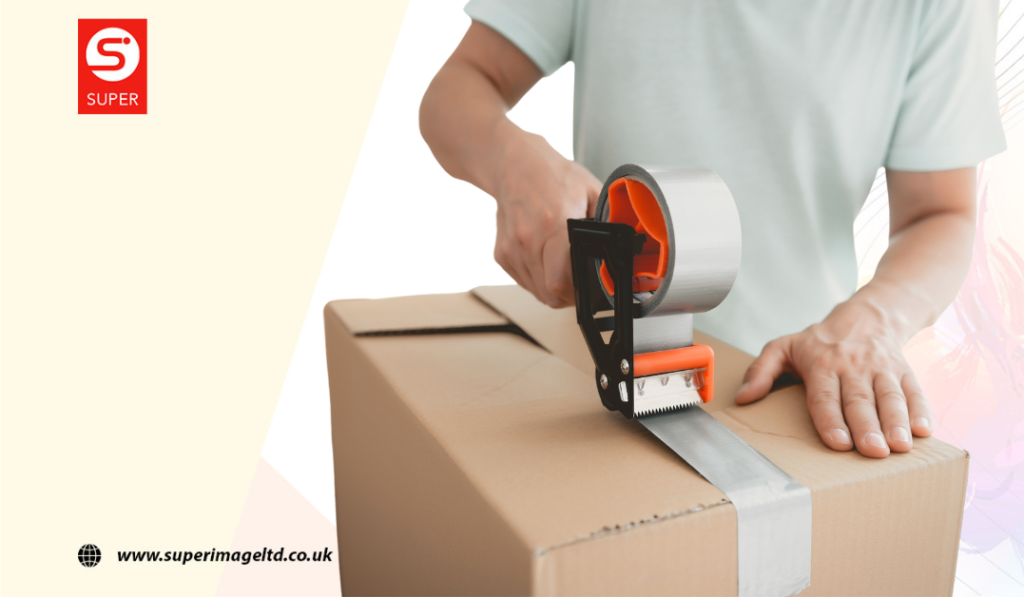Deciding what to do with old ink cartridges brings up eco-friendly concerns since improper disposal negatively impacts the environment.
However, consumers have excellent reusable and recycling options for old ink cartridges. This in-depth guide covers ways to responsibly dispose of ink cartridges or the sustainable management of used ink cartridges.
Recycling Old Ink Cartridges
Recycling programs for old inkjet cartridges allow consumers to dispose of old cartridges responsibly. Many retailers that sell ink cartridges, including Staples and Best Buy, provide collection boxes onsite. Additionally, manufacturers like HP and Canon offer free mail-back labels so customers can recycle empty and used cartridges by returning them.
There are also nonprofit programs, such as Recycle for Breast Cancer, that accept donated cartridges and channel funds raised into cancer research.
Check locally too – many communities have free household hazardous waste collection events and facilities that take ink cartridges.
Benefits of recycling ink cartridges:
- Conserves raw materials and energy used in manufacturing new ones
- Reduces landfill waste
- Allows materials like plastics and metals to be repurposed
How to Prepare Ink Cartridges for Recycling

Proper handling of expired ink cartridges ensures they can be properly processed through recycling programs. Follow these key steps for cleaning and packaging emptied cartridges to ready them for drop-off:
Step 1) Carefully seal any openings in the cartridge with durable packing tape in order to prevent ink leakage or seepage during storage or transport. Make sure no ink can escape through cracks or holes.
Step 2) Wrap each cartridge individually in a paper towel, newsprint, or soft cloth as extra leakage protection and to absorb small amounts of residual ink. Paper padding helps minimize mess if cartridges get damaged.
Step 3) Place the wrapped cartridges together inside a sealable plastic bag or rigid plastic tub to keep them contained and consolidated. If donating a bulk lot of cartridges, label the outer container with a count of included cartridges for easier verification.
Step 4) Whenever possible given cartridge construction, remove any detachable printer printheads from cartridges to separate more components for dedicated recycling processes. Not all cartridges allow printhead removal, however.
Step 5) Check with your area’s specific ink cartridge recycling program for any preparation restrictions such as bagging needs, mandatory printhead removal if possible, or limits on certain cartridge brands or volumes. This ensures they meet eligibility processing requirements.
Following these basic preparatory best practices maximizes their chances of successful recycling.
Reusing Old Ink Cartridges
Rather than tossing cartridges after the initial ink runs out, innovative consumers can save money and keep plastic waste out of landfills through affordable refilling or repurposing programs.
This sustainable management of used ink cartridges provides eco-conscious alternatives compared to constantly purchasing new replacements.
Refilling Ink Cartridges
Aftermarket ink refill kits allow users to inject new ink into depleted cartridge reservoirs, extending the usefulness of the plastic casing and integrated print head chip components.
DIY home syringe kits are inexpensive and good for approximately three refills per cartridge. Retail chains like Walmart and Costco also offer professional in-store cartridge refilling.
Reuse quality depends partially on the cartridge model and age, but remanufactured cartridge ink refills are affordable enough that moderately reduced print quality may not impact general home use. Refilling instead of replacing cartridges cuts costs substantially while amplifying product lifecycles.
Donating to Charity Initiatives

Many philanthropic organizations, including schools and nonprofit groups, fundraise by accepting donated used ink cartridges for resale or recycling. This charitable option aids sustainability efforts by diverting e-waste from landfills. National charities like Goodwill regularly sponsor cartridge donation drives with special collection bins.
Before donating, confirm details with each group, as some limit specific brands or models. Additionally, dried-out or expired cartridge donations may not qualify for acceptance depending on the organization’s arrangements with their recycling partners. Even with limitations, however, donating still reuses products constructively.
The key is reusing old cartridges creatively through refills or charitable initiatives rather than resigning them to waste removal unnecessarily. Refurbishing emptied inkjet cartridges conserves resources advantageously.
Return Programs from Manufacturers
Many printer original equipment manufacturers lead environmental conservation efforts through voluntary cartridge return incentive programs redeeming consumer participation into impactful reclamation results.
For example, Canon’s initiative provides free prepaid shipping labels enabling customers to simply box then mail back retired hardware of any model or brand to dedicated recovery facilities for professional disassembly.
Safely sorting plastics and metals ensures components funnel into proper waste streams through contractual brokers overseeing environmentally responsible materials reprocessing. This continually repurposes would-be trash into valuable commodities benefitting circular economic growth.
Lexmark, HP, Brother, Dell, and Epson all run similar zero waste schemes detailed on respective company websites as well. Usually self-printed postal labels come activated using existing eligible printer models registered to the account.
Proper Storage of Unused Ink Cartridges
Wise customers who have unused ink cartridge spares stored can maintain these assets correctly for future emergency backup, avoiding premature disposal regret.
Follow basic preservation best practices:
- Initially seal unopened OEM cartridges in zip bags with added silica moisture absorbers
- Carefully adhere to safe temperature guidance from manufacturers
- Label containers noting original purchase dates further tracking usable limits
By keeping cartridges in proven conditions that preserve ink integrity, operational shelf life extends easily over 12 months storing valuable spares for that unexpected urgent printer need.
Creative DIY Projects with Old Ink Cartridges
Repurposing spent cartridges for crafty home projects gives these would-be wastes artistic new life. Check out these fun, functional DIY ideas for reused empties:
Pen holders – Wash cartridges thoroughly and let dry before using decorative duct tape, paint, or glue to attach to containers like mugs or vases for handy desk storage.
Vases – Create custom bud vases by removing tops from large cartridges and decorating the plastic casing with texture, shapes, or color using paint, markers, or decals.
Pencil cases – Adhere a sheet magnet to the bottom then decorate the cartridge body with decorative tape or fabric for a one-of-a-kind back-to-school carry case.
Additional possibilities include jewelry holders, memo boards, and even unique table lamps. Repurposed ink cartridges make great tween/teen crafts too – provide young crafters with safe decor options and emphasize recycling benefits.
Choosing Eco-Friendly Ink Cartridges
Support sustainability from the start by purchasing replacement cartridges made with recycled materials. Newer plant-based or non-toxic inks also compose some cartridge models with improved end-of-life-cycle processes.
When shopping, consider:
- Cartridges containing 50% or more recycled plastic content
- Brands offering free takeback/mail-back recycling programs
- Vegetable oil-based inks eligible for composting instead of standard disposal
- Certified “green” cartridges like those meeting STMC standards
Ask local retailers for available environmentally preferable cartridge options too. Every decision at the point of purchase incrementally motivates positive change.
Conclusion
When deciding what to do with old ink cartridges, responsible consumers have multiple options at their disposal for managing such problematic wastes proactively once the initial ink runs empty.
Refurbishing through affordable refilling programs extends usable lifespans multiple times rather than purchasing new replacements constantly. Charitable donations to qualifying nonprofit groups also constructively repurpose would-be trash beneficially by raising funds or supplying discounted cartridge recovery materials.
Following sound inkjet sustainability practices like refilling, reusing through donations, and then properly recycling once fully expired directs consumer lifecycle waste flows responsibly from start through eventual end-states.
Implementing several complementary strategies maximizes value recapture while reducing discarded plastic volumes clogging regional landfills over the long run.
FAQ’s
No, it’s not recommended; recycle them to prevent hazardous waste.
Check with retailers or visit the manufacturer’s website for recycling locations.
Yes, but it requires precision and the right equipment; consider professional refilling services.
Many manufacturers offer discounts or rewards for returning used cartridges.
Remove them from the printer, store in a plastic bag, and follow the recycling guidelines provided by the manufacturer.

I am not sure where youre getting your info but good topic I needs to spend some time learning much more or understanding more Thanks for magnificent info I was looking for this information for my mission
My brother suggested I might like this website He was totally right This post actually made my day You cannt imagine just how much time I had spent for this information Thanks
Hello my loved one I want to say that this post is amazing great written and include almost all significant infos I would like to look extra posts like this
My brother suggested I might like this website He was totally right This post actually made my day You cannt imagine just how much time I had spent for this information Thanks
Attractive section of content I just stumbled upon your blog and in accession capital to assert that I get actually enjoyed account your blog posts Anyway I will be subscribing to your augment and even I achievement you access consistently fast
Wonderful web site. Lots of useful info here. I’m sending it to a few https://brazzers.pw/ friends ans additionally sharing in delicious. And obviously, thanks to your effort!
Enjoyed examining this, very good stuff, thank you. Najlepsze escape roomy
I like this weblog very much, Its a really nice situation to
read and receive info.!
Just wish to say your article is as surprising The clearness in your post is just cool and i could assume youre an expert on this subject Fine with your permission allow me to grab your RSS feed to keep updated with forthcoming post Thanks a million and please keep up the enjoyable work
Thank you for the auspicious writeup It in fact was a amusement account it Look advanced to more added agreeable from you By the way how could we communicate
I do not even know how I ended up here but I thought this post was great I do not know who you are but certainly youre going to a famous blogger if you are not already Cheers
My brother suggested I might like this blog He was totally right This post actually made my day You can not imagine simply how much time I had spent for this info Thanks
Fantastic site Lots of helpful information here I am sending it to some friends ans additionally sharing in delicious And of course thanks for your effort
I’m pretty pleased to find this great site. I wanted to thank you for ones time just for this wonderful read!! I definitely savored every bit of it and i also have you saved as a favorite to look at new stuff in your website.
There is certainly a great deal to learn about this topic. I really like all of the points you made.
I need to to thank you for this wonderful read!! I absolutely loved every bit of it. I have got you bookmarked to check out new stuff you post…
I was able to find good info from your blog articles.
I have been surfing online more than 3 hours today yet I never found any interesting article like yours It is pretty worth enough for me In my opinion if all web owners and bloggers made good content as you did the web will be much more useful than ever before
Hi Neat post Theres an issue together with your web site in internet explorer may test this IE still is the marketplace chief and a good component of people will pass over your fantastic writing due to this problem